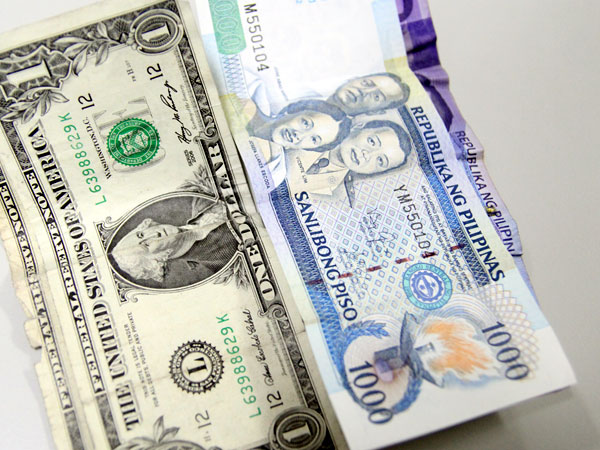
INQUIRER.net FILE PHOTO
The peso again fell to its lowest level in almost 13 years in intraday trading on Friday but recovered to end the session stronger in the back of what bankers described as central bank intervention in the foreign exchange market.
The local currency declined to as low as P53.975 to the dollar in afternoon trading, but was closed at P53.73:$1, stronger than the P53.80 of the previous day.
Trading volume was heavy with $956.9 million changing hands during the day.
As this developed, Bangko Sentral ng Pilipinas Governor Nestor Espenilla Jr. said regulators will take “all actions necessary” against “speculative activity by market participants” who have pushed the currency lower in recent weeks.
The central bank also unveiled a dollar hedging mechanism introduced during the 1997 East Asian financial crisis — and used heavily during the financial markets turmoil in the lead up to former President Estrada’s resignation in 2001 — in a bid to cushion the peso’s precipitous drop.
Espenilla said the Currency Risk Protection Program will be made available to eligible corporates with foreign exchange obligations based on more liberalized rules. With this scheme, regulators hope that large corporations with future dollar needs will not rush to buy them early, thus aggravating the peso’s weakness.
The CRPP is a non-deliverable forward hedging facility which is aimed at alleviating demand pressures in the foreign exchange spot market from borrowers seeking to hedge their future foreign exchange exposures.
Under the facility, parties agree that, on maturity of the forward contract, only the net difference between the contracted forward rate and the spot rate shall be settled in pesos. The BSP will make the CRPP available to eligible borrowers through the commercial banks.
The BSP chief also said it will take “strong immediate action using the full range of instruments in its toolkit” in order to respond to the emerging threats to inflation and inflation expectations.
Regulators’ move to buttress the peso is also meant to address the country’s record high inflation rate of 6.4 percent in August as a weak currency also makes imported goods like petroleum more expensive.
“The follow-through actions will also address other threats to higher inflation such as excessive exchange rate volatility not consistent with underlying macroeconomic fundamentals in order to ensure that inflation returns to its 2-4 percent target over the policy horizon,” Espenilla said. /jpv
RELATED STORY
As peso drops to 13-yr low, PH growth may take a hit